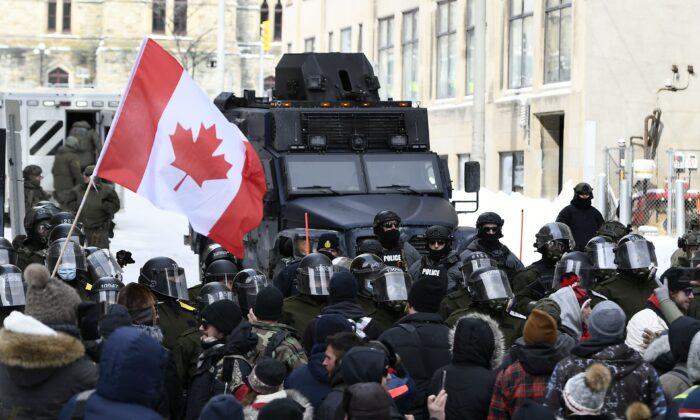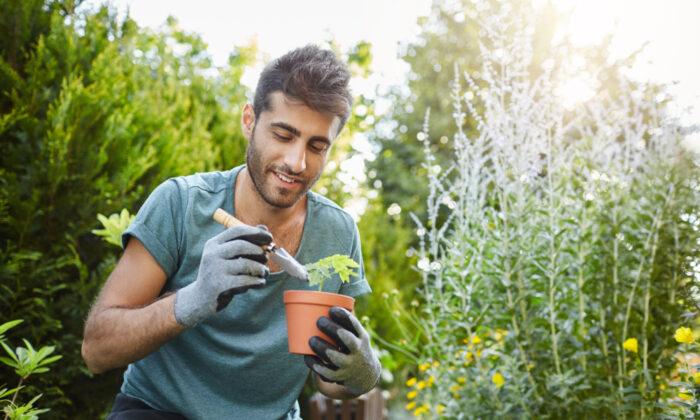VANCOUVER—The rich cultures and traditions of Canada’s Aboriginal peoples, depicted through works of art, will be showcased when the world visits Vancouver for the 2010 Olympic Games.
As part of the 2010 Aboriginal Arts program, each of the 15 Olympic and Paralympic venues will incorporate works by Canada’s diverse Aboriginal artists.
The $2 million program incorporates over 140 pieces of art from 90 First Nations, Inuit, and Métis artists, adding a uniquely Canadian element to the Games. The artists hail from every province and territory, with 35 from B.C.
The program will produce a first of its kind collection of art from established artists as well as up and coming talent, leaving a legacy of artwork and serving as a testament to the artistic talent of Canada’s Aboriginal peoples.
Forty of the pieces, which in some cases are seamlessly integrated into the structure of the venue itself, will become permanent fixtures at the venues.
The works are in both traditional and contemporary styles and use a wide variety of mediums including textiles, copper, steel, concrete, yellow cedar, glass and caribou tufting.
The program incorporates an educational and cultural element by pairing established artists with at-risk youth from across Canada to create three original sculptures for the Games.
One of those participating in the program is Haida artist Michael Nicoll Yahgulanaas whose work will be showcased at UBC’s Thunderbird winter sports arena.
“I was contacted by an agent of the program and asked if I would participate in exposing urban youth to some of the intricacies of producing contemporary Art,” Yahgulanaas said.
The inventor of a new genre of graphic narrative called Haida manga, Yahgulanaas uses Haida narratives and transforms them into contemporary and socially relevant art.
His venue piece “Take-Off” is a copper bird figure sitting six meters above the entrance to UBC’s Thunderbird winter sports arena. The surface of the bird is tattooed with a Haida manga image of a speeding hockey player with stick in hand. The bird is meant to reflect the spirit of the dove which is integral to the Olympics’ message of peace, and the hockey player is a representation of sport as a peaceful event.
Also involved with the Aboriginal Art Program is the Urban Native Youth Association (UNYA), UNYA addresses issues that negatively affect the lives of youth through prevention-based activities such as tutoring, peer leadership, employment, culture, residential programs, and sports and recreation activities.
“The Urban Native Youth Association is so competently organized and responsibly run as to be almost unique,“ said Yahgulanaas. ”The care of physical infrastructure and organizational maturity is something to be commended. It makes Canadians look very good.”
Aboriginal art is currently flourishing—it has survived and thrived despite the challenges faced by Canada’s Indigenous peoples.
“Specifically for Indigenous Peoples in the Canadian experience, the production of art remains one of the few areas where culture has not been fully assaulted by foreign interventions,” said Yahgulanaas.
The 2010 Aboriginal Arts program is sponsored by the Vancouver Organizing Committee for the 2010 Olympic and Paralympic Games along with the The Four Host Nations Society, a non-profit organization that has been established by the Lil'wat, Musqueam, Squamish and Tsleil-Waututh First Nations.
Sixteen Four Host First Nations works will have pride of place in areas such as entrances and gateways at venues like Pacific Coliseum and the Olympic and Paralympic Villages in Whistler and Vancouver.
As part of the 2010 Aboriginal Arts program, each of the 15 Olympic and Paralympic venues will incorporate works by Canada’s diverse Aboriginal artists.
The $2 million program incorporates over 140 pieces of art from 90 First Nations, Inuit, and Métis artists, adding a uniquely Canadian element to the Games. The artists hail from every province and territory, with 35 from B.C.
The program will produce a first of its kind collection of art from established artists as well as up and coming talent, leaving a legacy of artwork and serving as a testament to the artistic talent of Canada’s Aboriginal peoples.
Forty of the pieces, which in some cases are seamlessly integrated into the structure of the venue itself, will become permanent fixtures at the venues.
The works are in both traditional and contemporary styles and use a wide variety of mediums including textiles, copper, steel, concrete, yellow cedar, glass and caribou tufting.
The program incorporates an educational and cultural element by pairing established artists with at-risk youth from across Canada to create three original sculptures for the Games.
One of those participating in the program is Haida artist Michael Nicoll Yahgulanaas whose work will be showcased at UBC’s Thunderbird winter sports arena.
“I was contacted by an agent of the program and asked if I would participate in exposing urban youth to some of the intricacies of producing contemporary Art,” Yahgulanaas said.
The inventor of a new genre of graphic narrative called Haida manga, Yahgulanaas uses Haida narratives and transforms them into contemporary and socially relevant art.
His venue piece “Take-Off” is a copper bird figure sitting six meters above the entrance to UBC’s Thunderbird winter sports arena. The surface of the bird is tattooed with a Haida manga image of a speeding hockey player with stick in hand. The bird is meant to reflect the spirit of the dove which is integral to the Olympics’ message of peace, and the hockey player is a representation of sport as a peaceful event.
Also involved with the Aboriginal Art Program is the Urban Native Youth Association (UNYA), UNYA addresses issues that negatively affect the lives of youth through prevention-based activities such as tutoring, peer leadership, employment, culture, residential programs, and sports and recreation activities.
“The Urban Native Youth Association is so competently organized and responsibly run as to be almost unique,“ said Yahgulanaas. ”The care of physical infrastructure and organizational maturity is something to be commended. It makes Canadians look very good.”
Aboriginal art is currently flourishing—it has survived and thrived despite the challenges faced by Canada’s Indigenous peoples.
“Specifically for Indigenous Peoples in the Canadian experience, the production of art remains one of the few areas where culture has not been fully assaulted by foreign interventions,” said Yahgulanaas.
The 2010 Aboriginal Arts program is sponsored by the Vancouver Organizing Committee for the 2010 Olympic and Paralympic Games along with the The Four Host Nations Society, a non-profit organization that has been established by the Lil'wat, Musqueam, Squamish and Tsleil-Waututh First Nations.
Sixteen Four Host First Nations works will have pride of place in areas such as entrances and gateways at venues like Pacific Coliseum and the Olympic and Paralympic Villages in Whistler and Vancouver.





Friends Read Free